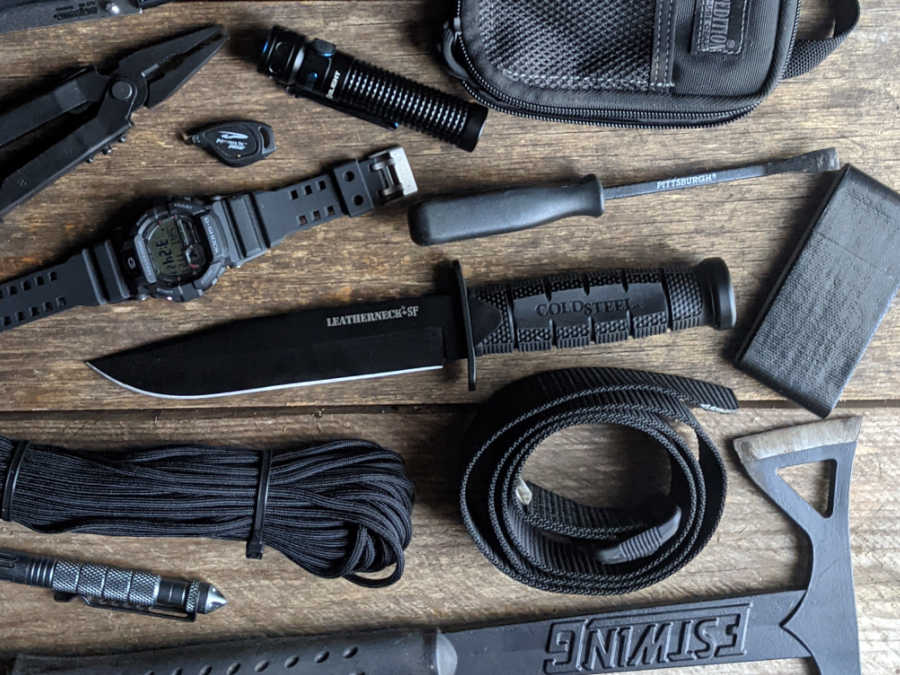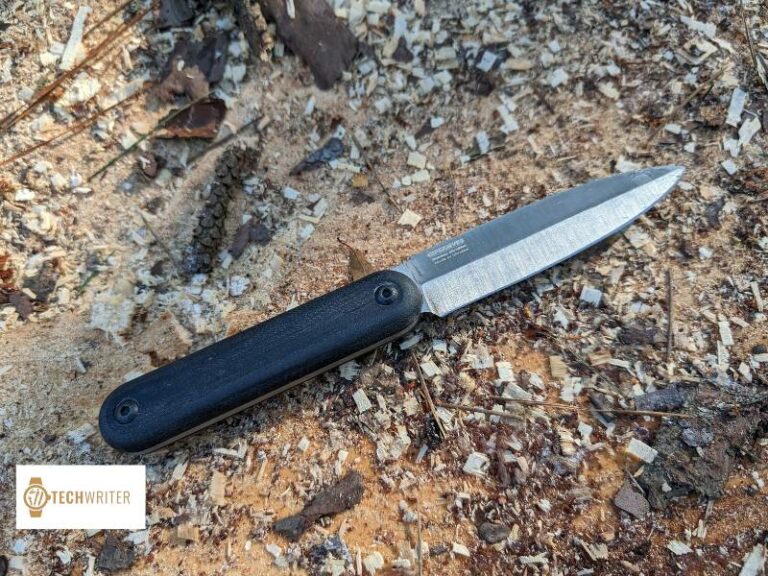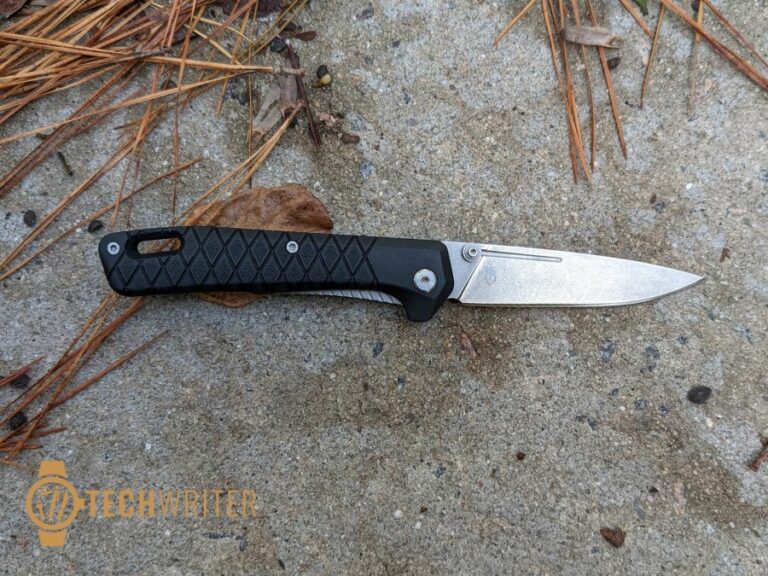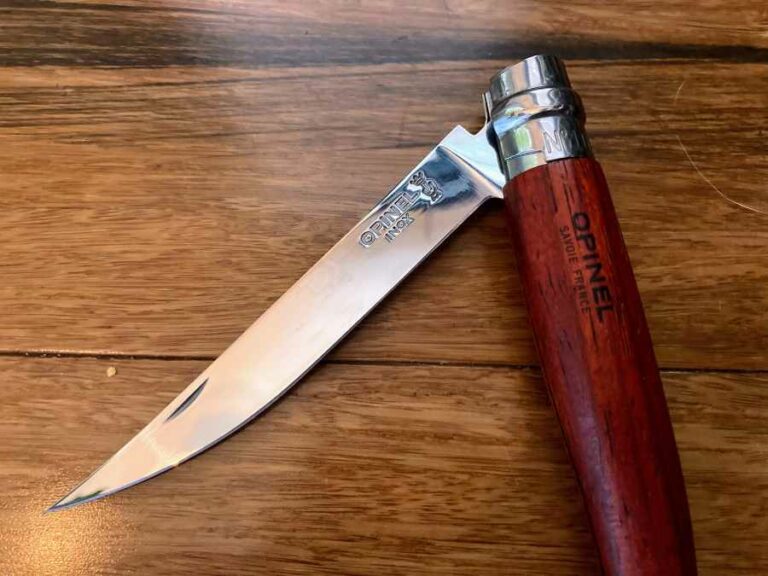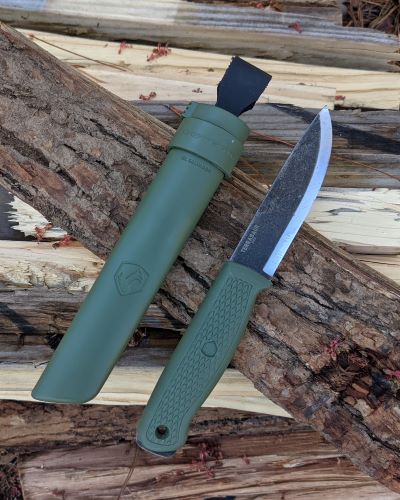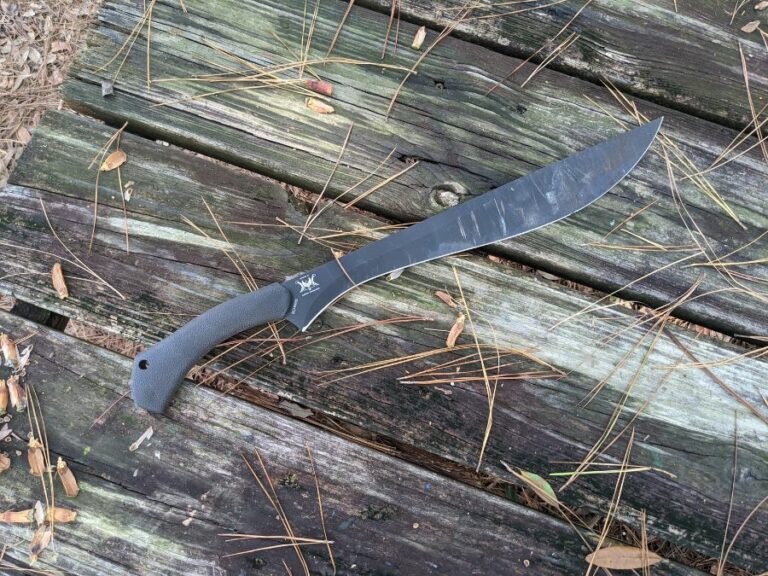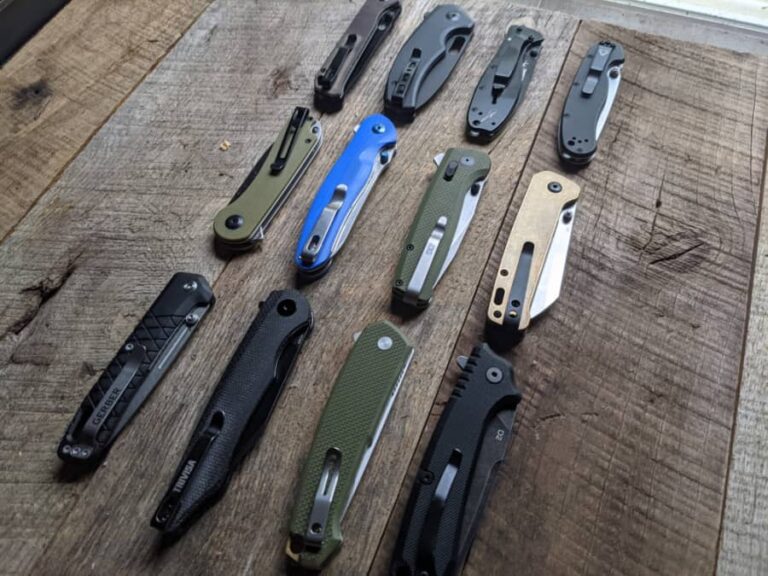Cold Steel Leatherneck SF Review
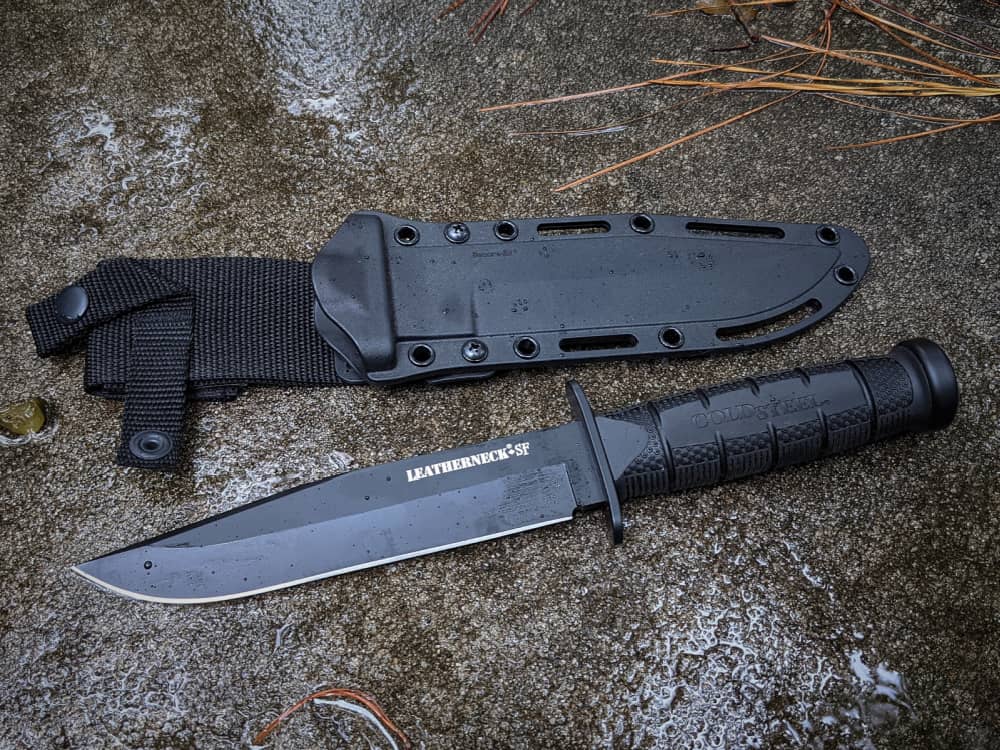
The Cold Steel Leatherneck SF is a knife that makes a great impression right out of the gate. It has a classic design with some modern tweaks that give it an edge (please forgive the pun) over some of its competitors.
The “SF” in this knife’s full title stands for Semper Fidelis, the motto of the U.S. Marine Corps, and comparisons between the Leatherneck and the classic USMC Ka-Bar knife are obvious. These knives share more than a little bit of DNA, but Cold Steel’s version also stands on its own as a tough, dependable and well-made tool.
Much like the Ka-Bar, the Cold Steel Leatherneck is a combat knife. But it’s also a utility knife that has become a very popular hunting, bushcraft and survival knife. I’ll tell you upfront that I like this knife a lot. Let’s take a closer look at what makes it unique.
Cold Steel Leatherneck SF: First Impressions
I’ve had my Leatherneck for a while now. It’s become one of my go-to knives for tasks around the house and backyard, and has a semi-permanent place on the wall of my garage.
Some guys buy knives like this because they want to feel like Rambo when they hold it in their hands. That hasn’t ever quite been my thing, but I’m still a child of the ‘80s, and I’ll admit that the Cold Steel leatherneck brings back a lot of memories of watching action movies and reading Soldier of Fortune magazines when I was a kid.
Ultimately, the purpose of this review is to suss out how useful the Leatherneck is and how well it holds up to wear and tear, not how badass you feel when it’s riding on your hip. But it is worth acknowledging… it’s kind of a badass knife.
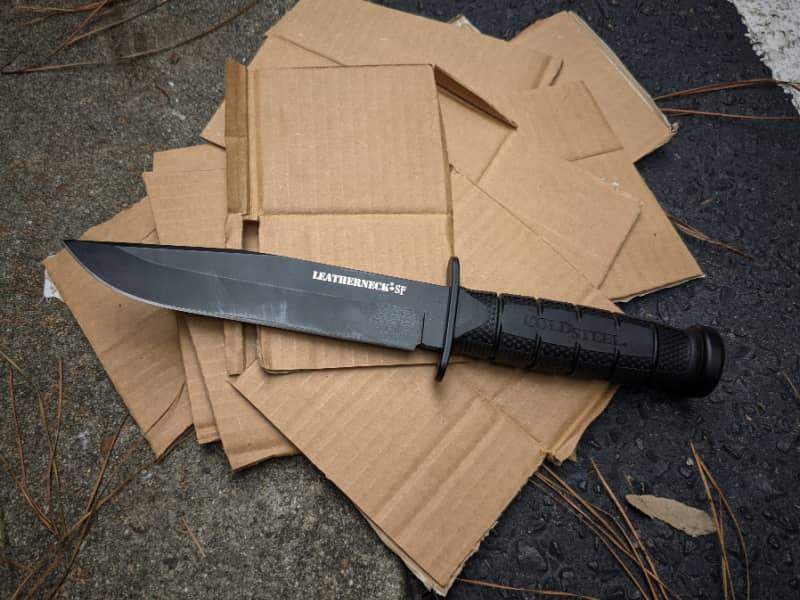
Measurements & Stats
The Leatherneck Cold Steel SF measures 11.75” from tip to butt cap, and has a 6.75” clip point blade. That blade is 5 mm thick, and is made of D2 steel with a non-reflective black powder coat finish. It has a full tang, which extends all the way through the checkered Kray-Ex handle.
Tipping the scales at 11.7 ounces, the Leatherneck has some solid, confidence-inspiring heft to it. Put simply, it’s a lot of knife. It comes with a military-style Secure-Ex sheath, which includes a fully removable and reversible belt loop.
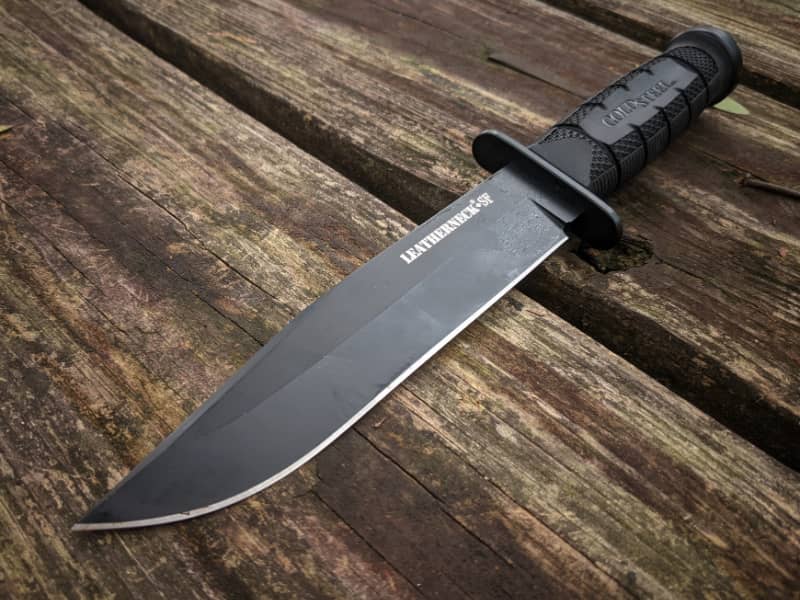
Blade Shape & Grind
The Leatherneck’s blade is close to a classic clip point shape, although the clip is straight rather than concave. The clip is also not sharpened, as it is on some knives, which I personally find makes it better for things like woodworking, batoning firewood and shaving tinder.
Up top, you’ll notice a crisp, 90-degree spine (it will throw a spark when struck with a ferro rod, provided you remove the black powder coat). The majority of the cutting edge is straight, up until the point where it curves upward to meet the point.
The blade has what I’m going to call a sabre hollow grind. It has a convex (i.e. hollow) main bevel, with a much smaller flat micro-bevel at the cutting edge. While there will always be certain knife aficionados who associate a hollow grind with a weaker blade, I’d argue that a well-made, quality hollow grind knife like this one actually has some real advantages.
The hollow grind helps draw the material being cut against the blade. That makes the Leatherneck an excellent hunting knife for slicing, skinning and other backcountry food prep, though it might not be quite as effective at extremely heavy-duty chores like batoning firewood
And because it has a flat secondary bevel, it’s also easy to sharpen on a standard sharpening stone. I would even argue that it’s easier to sharpen, because the blade is thinner at the edge, meaning you have less material to work through.
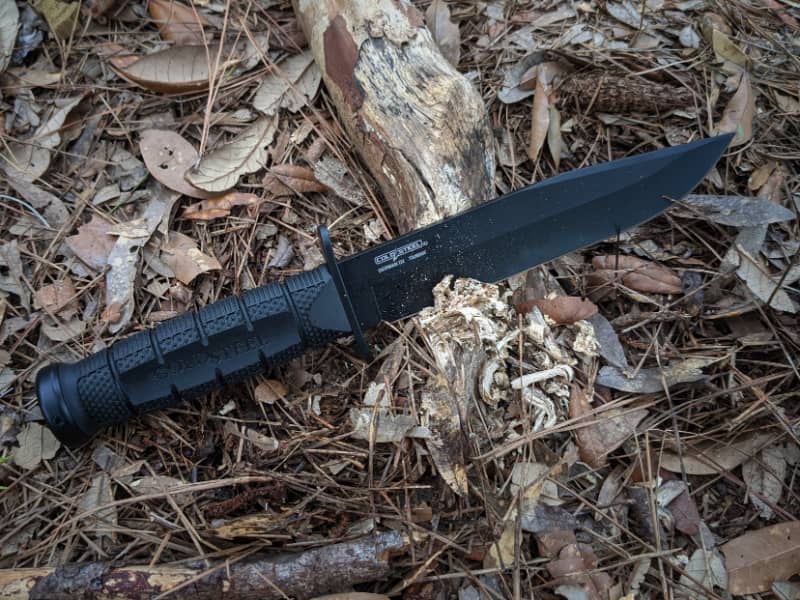
D2 Steel
Time for today’s episode of “Steel Talk!” The blade of the Cold Steel Leatherneck is made of German D2 steel. So just what is that, exactly?
D2 is a high-carbon, high-chromium steel. I’ve seen it referred to as “semi-stainless” steel, and in a nutshell, it’s sort of a hybrid of carbon steel and stainless steel, which offers many of the benefits of both. It first became popular during the World War II era, when it was used in factories to create the dies that stamped out parts made of other, softer steels.
In the context of a knife blade, D2 offers excellent hardness, toughness and wear-resistance. It’s considerably more corrosion-resistant than carbon steel (though not quite as much as true stainless steel) which is great if you use your Cold Steel Leatherneck for hunting, bushcraft or as a survival knife. It’s not always easy to keep your steel dry in those kinds of scenarios.
The blade of the Leatherneck maintains its sharp edge very well, even with repeated use. Mine came pretty close to shaving-sharp right out of the box, and the D2 is fairly easy to hone to a fine edge when the time comes to re-sharpen.
As I noted above, D2 steel also sparks when struck with a ferro rod, though perhaps not quite as readily as higher-carbon steel might. To do so, you’ll have to sand off the back powder coat from the spine.
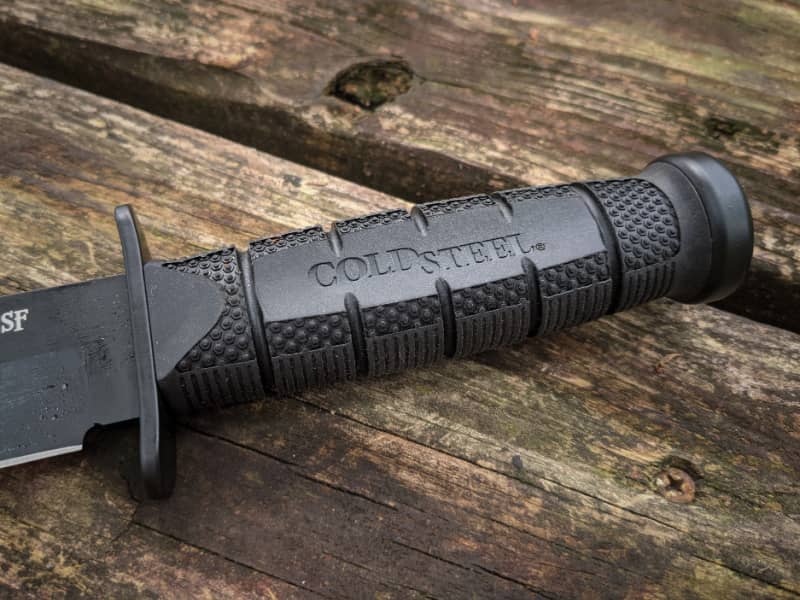
Handle & Grip
One of the things I like most about the Leatherneck is its handle. It’s made of Kray-Ex (a soft, rubber-like plastic) which is deeply checkered to provide excellent grip. And when I say excellent grip, I mean this thing really locks into the palm of your hand when you’re using it, with no slippage even when things get wet.
A cross-section of the handle is oval rather than round, which also does a lot to make it comfortable and grippy. An oval-shaped handle profile simply fits the palm of one’s hand better than a round handle.
There are also finger grooves molded into the handle material, which recall the stacked leather handle of a Ka-Bar. While I happen to love the look of the classic leather handle, I have to admit that the soft, rubbery Kray-Ex provides better grip.
The Cold Steel Leatherneck also has a double quillon guard to keep your fingers safe in the event that one should stray a little too close to the back end of the blade. There is also a machined steel butt cap at the rear of the handle, which makes for a solid hammer if the need should arise.
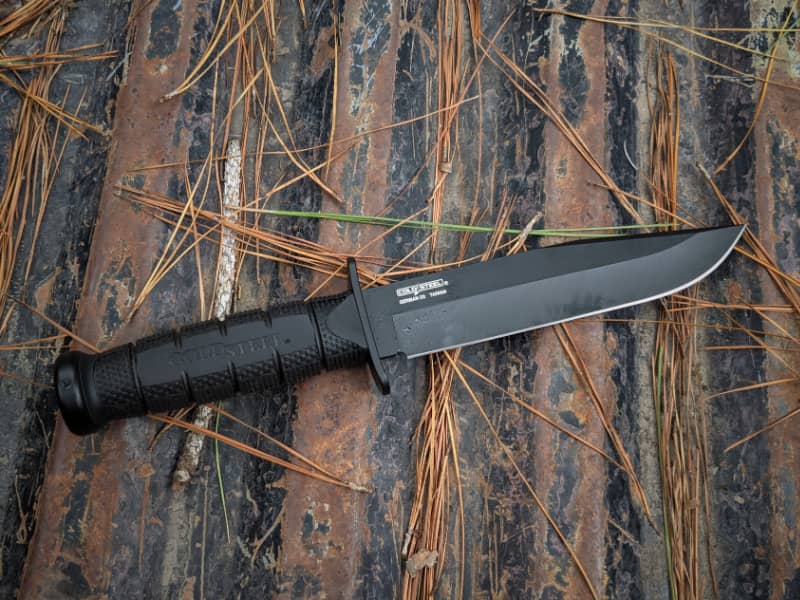
Final Thoughts on the Cold Steel Leatherneck
The Cold Steel Leatherneck SF isn’t a bushcraft knife, but it can essentially do everything that a bushcraft knife can do. Hunters will find it especially adept at slicing, skinning and breaking down game, while bushcrafters and survivalists may never run out of ways to use this knife.
It’s designed with military use in mind, which is to say that it’s a fighting knife that is also useful as a utility knife. I haven’t talked much about the sheath, but it’s a sturdy Secure-Ex model made of hard plastic with a nylon belt loop. It’s reversible, and the knife slides securely in place with an audible “clunk.”
This knife gets compared to the USMC Ka-Bar a lot, so it’s natural to wonder which is better. I don’t have an easy answer to that, and to be fair, I haven’t taken the time to do a true side-by-side comparison between the two knives. I will say this: a lot of reviewers have framed the Leatherneck as a budget-friendly alternative to the K-Bar at best, and a cheap knock-off at worst. I have to disagree with that.
Despite the obvious similarities, I think the Cold Steel Leatherneck stands on its own. I think it’s beautifully designed, I think the handle is perfection, and I think the D2 steel—one of the things about this knife that some people love to complain about—is actually pretty great.
Ultimately, the only way to know if a knife is any good is to use it and abuse it until all your doubts have been assuaged. That’s something I’ve done with the Cold Steel Leatherneck SF again and again, and I keep coming back to it.

Blair Witkowski is an avid watch nut, loves pocket knives and flashlights, and when he is not trying to be a good dad to his nine kids, you will find him running or posting pics on Instagram. Besides writing articles for Tech Writer EDC he is also the founder of Lowcountry Style & Living. In addition to writing, he is focused on improving his client’s websites for his other passion, Search Engine Optimization. His wife Jennifer and he live in coastal South Carolina.

